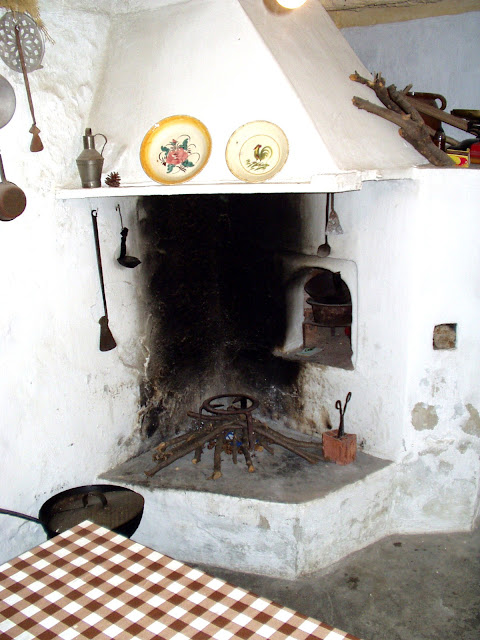 |
| An up-the-down staircase tour of Moorish-Spanish home. Photo by S. van Drake |
We all appreciate palettes of rich and vibrant colours or still lifes of soft tonal lines and subtle shapes.
Then there's our perception of time. Mine abandoned me, well, a long time ago.
One reason I watch "Doctor Who" in its various reincarnations is the whole idea of timewarping fascinates me, especially into the past.
I've been places like the Parthenon in Athens back in the day when you could hug statues. You close your eyes and walk with these ancient phantoms.
I had such an opportunity in 2005 while living in Competa, a village about 4 kms from my own, Canillas de Albaida.
Both are a white-washed stair-like assemblage of stepped-up-the-mountainside masonary homes, some built on top of others.
Odd-shaped buildilng blocks, narrow winding streets and a world of labyrinths like an Arab suk.
One of my Competa neighbors, Don Antonio and wife Pacita, invited me to take pictures of their home. They wanted to capitalize on the now burst Spanish realestate bubble and market their home for sale discreetly.
They thought I could help.
 |
| Photo by S. van Drake |
I welcomed the opportunity.
And once I walked into this Moorish maze of an up-the-downstairs myriad of rooms (over three floors) and nearly hidden alcoves with late afternoon light playing games with the windows and stairs, I knew I had gone down the rabbit hole of time.
I had just walked back into a medieval Moorish-Spanish world that seemed to seamlessly feel current and warm and lived-in.
Pacita's totally renovated and modern kitchen was the only space transformed by the 20th and 21st Centuries.
The rest was a lived-in museum.
Many of the wood tools and implements would fit nicely in a medieval film set; some are still used today, like wooden pitchforks, which you can buy new at the hardware store.
But Pacita's arrangement of her ojectos de revealed raw artistic talent as well as pride.
All you see on the narrow street outside this inner sanctum with a huge open to-the-sky courtyard is a blue double door.
Later, I sent the photos (with Don Antonio's consent) to a very welathy philanthropist-lawyer I knew who deeply invested in the arts and who lived in Palm Beach.
I suggested that he should buy it and convert it to an arts residency for Amercan art students. He never replied. And I have never asked Don Antonio if he sold the home.
Rock on and practice peace and love.
See ArtTraveler videos on YouTube and follow Dutch walkers Joost and Rob on their 1,000 km pilgramage (Via de la Plata) from Seville to Santiago de Compostela. They are accumulating a rich photo gallery.
 |
| Photo by S. van Drake |
 |
| Photo by S. van Drake |
 |
| A little like a Francisco de Zurbaran still life I saw at the Prado. Photo by S. van Drake |
 |
| Photo by S. van Drake |
 |
| Photo by S. van Drake |
 |
| A village street in Moorish village of Competa, Spain. Photo by S. van Drake |
 |
| The family dining area continues in use as it has for 100's of years. Photo by S. van Drake |
 |
| Ancient Moorish wooden beams still support the home. Photo by S. van Drake |
 |
| The medieval kitchen hearth and fireplace, still occasionally used. Photo by S. van Drake |
 |
| Photo by S. van Drake |
 |
| Photo by S. van Drake |
 |
| Photo by S. van Drake |
 |
| Photo by S. van Drake |
No comments:
Post a Comment